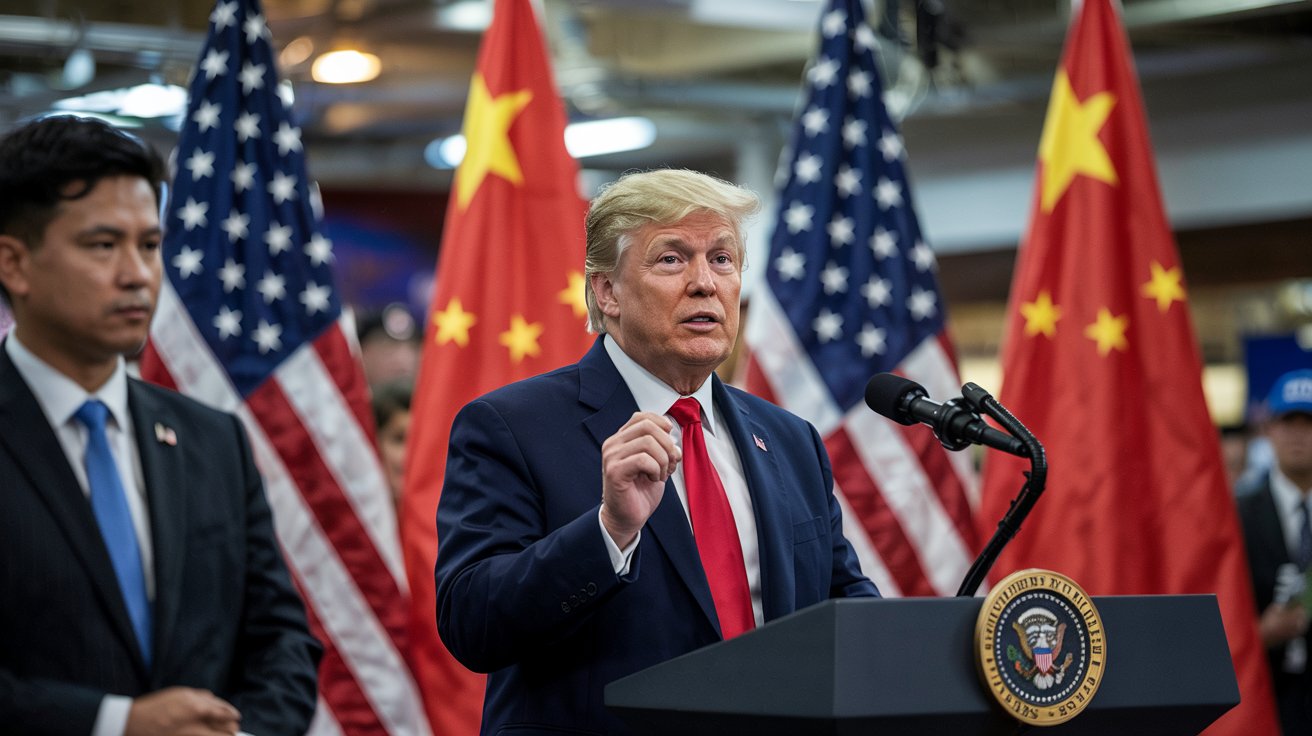Trump imposes sweeping tariffs, igniting global trade tensions in one of the most significant trade policy decisions in recent U.S. history. On April 9, 2025, former President Donald Trump imposed a 104% tariff on Chinese imports, including vehicles, electronics, and steel. This aggressive economic maneuver sparked a rapid chain reaction in global markets and political corridors worldwide.
What Did Trump’s Tariffs Include and Why Were They Imposed?
President Trump’s 2025 tariff package targets over $150 billion in Chinese goods, including:
- Electric vehicles
- Consumer electronics
- Industrial metals
- Solar panels
The move is part of Trump’s long-standing promise to counteract what he claims are “unfair Chinese trade practices” and revive domestic manufacturing jobs. His administration cites persistent trade imbalances and intellectual property theft as reasons.
However, critics argue that this strategy risks pushing the U.S. deeper into a trade war that could lead to long-term economic volatility and higher consumer costs.
What Goods Are Targeted by the 2025 Trump Tariffs?
| Product Category | Tariff Rate | Estimated Price Impact for U.S. Consumers |
|---|---|---|
| Electric Vehicles | 104% | +$7,000 average increase |
| Consumer Electronics | 70% | +15-25% on average retail prices |
| Steel and Aluminum | 40-80% | Increased construction and manufacturing costs |
| Solar Panels | 85% | Higher energy installation costs |
How Have Global Markets and Governments Responded?
The immediate global response was swift and intense. China retaliated within 48 hours, imposing a 34% tariff on U.S. agricultural exports, cars, and microchips. Other nations such as the European Union, South Korea, and Japan also condemned the move, warning it could destabilize global trade relations.
The S&P 500 fell 4.1%, marking its largest single-day drop since 2022. International trade agencies have cautioned that these tit-for-tat measures could shrink global GDP by 1.2% if prolonged.
How Will These Tariffs Affect Everyday Americans?
The consequences of these tariffs will be felt directly by U.S. households:
- Electronics will become more expensive as companies pass on costs.
- Food prices may rise due to China’s retaliation on agriculture.
- Jobs in farming, tech, and export-driven manufacturing are at risk.
- Housing and infrastructure costs could increase due to tariffed steel.
According to the Brookings Institution, over 3.1 million U.S. jobs are connected to sectors now under pressure from these tariffs.
Sweeping Tariffs,What’s Next? Can the U.S. and China De-Escalate?
While some experts believe this is a negotiation tactic, others say the damage is already done. The World Trade Organization (WTO) has warned of long-term global supply chain instability.
Efforts are underway behind closed doors for high-level talks between Washington and Beijing, but no resolution is in sight. Meanwhile, U.S. farmers and manufacturers are urging the administration to reconsider, citing unsustainable economic strain.
Conclusion: What This Means for the Future of U.S. Trade
President Trump’s sweeping tariffs have undeniably ignited global trade tensions and placed the U.S. economy on uncertain footing. While supporters see this as a bold defense of American industry, early signs suggest these actions may harm U.S. businesses and consumers more than their intended targets.
With key trading partners responding aggressively, the global economy is bracing for a potential recession, and American households are preparing for a costlier 2025. The long-term effects depend heavily on upcoming negotiations, diplomatic moves, and how markets adapt to the new trade landscape.
[USnewsSphere.com / cbs]





